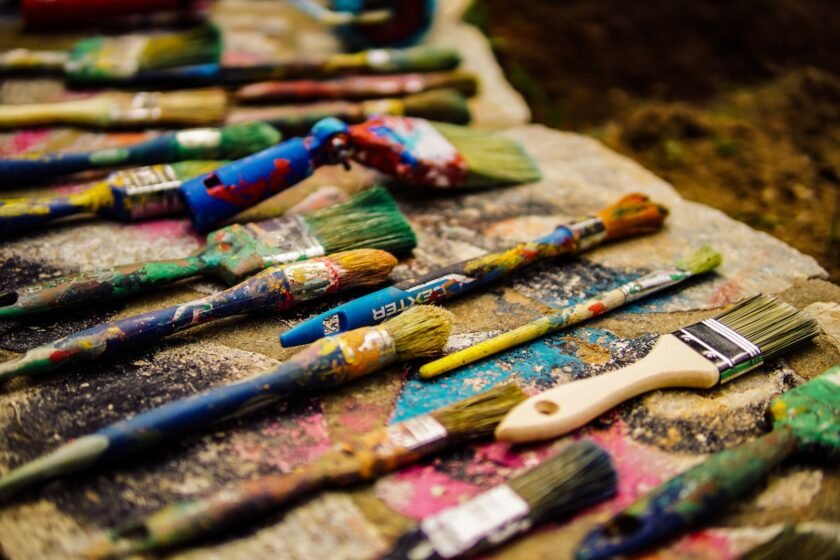If you’re a painter or an art enthusiast, then you must be familiar with the importance of canvas for painting. A canvas is a surface used for painting, and it is an essential component of any painting project. In this article, we will cover everything you need to know about canvas for painting, including the types, materials, sizes, and care tips.
1. What is a Canvas for Painting?
Canvas is a fabric used as a surface for painting. It is made of either linen or cotton, and it is stretched over a wooden frame. Canvas has been used for painting since the 16th century, and it remains a popular choice for artists today.
2. Types of Canvas for Painting
There are two main types of canvas for painting: stretched and unstretched. Stretched canvas is already stretched over a wooden frame, while unstretched canvas is just a roll of canvas fabric that needs to be stretched over a wooden frame. Stretched canvas is the more popular choice as it is easier to work with and ready to use straight away.
3. Materials Used for Canvas
The two primary materials used for canvas are linen and cotton. Linen canvas is considered to be the superior option as it is stronger and more durable than cotton. However, linen canvas is also more expensive. Cotton canvas is a more affordable option, and it is widely used by artists of all levels.
4. Different Sizes of Canvas
Canvas comes in various sizes, ranging from small canvases used for miniature paintings to large canvases used for murals. Some of the standard sizes for canvas include 8×10 inches, 16×20 inches, and 24×36 inches.
5. How to Choose the Right Canvas for Painting?
When choosing a canvas for painting, you need to consider several factors such as the type, material, size, and budget. If you’re a beginner, a cotton canvas would be a good choice as it is affordable and easy to work with. For professional artists or those who want to create a long-lasting piece of art, a linen canvas would be the better option.
6. Stretching a Canvas for Painting
If you’ve purchased an unstretched canvas, you need to stretch it over a wooden frame before you can start painting. Stretching a canvas is a simple process that involves stapling the canvas onto the wooden frame using a staple gun.
7. How to Prime a Canvas for Painting?
Before you start painting on a canvas, you need to prime it. Priming is the process of preparing the surface of the canvas for painting. You can prime a canvas using gesso, which is a mixture of glue and chalk. Priming the canvas gives it a smooth surface and ensures that the paint adheres well to the canvas.
8. How to Clean and Care for Canvas?
To ensure that your canvas lasts a long time, you need to take proper care of it. Cleaning a canvas involves using a soft brush to remove any dust or dirt that has accumulated
on the surface. If there are any stains or marks on the canvas, you can use a damp cloth to gently clean the affected area. It’s essential to avoid using harsh chemicals or abrasive materials that can damage the canvas. You should also avoid exposing the canvas to direct sunlight or extreme temperatures, as this can cause the canvas to deteriorate.
9. The Advantages of Using a Canvas for Painting
Using canvas for painting offers several advantages. Canvas has a sturdy surface that can withstand the weight of heavy paints, and it doesn’t warp or buckle like paper. Canvas is also more durable than paper and can last for centuries if properly cared for. Additionally, canvas gives paintings a professional and polished look that paper cannot match.
10. The Disadvantages of Using a Canvas for Painting
While canvas has many advantages, it also has some disadvantages. Canvas is more expensive than paper, and it requires more materials to prepare and stretch. Additionally, canvas can be bulky and difficult to transport, especially if you’re working on a large canvas.
11. The Evolution of Canvas for Painting
Canvas has been used for painting for centuries, and it has undergone several changes over time. The earliest canvases were made of hemp, and they were used by artists in the Middle Ages. Later, linen became the preferred material for canvas, and it remained popular until the 19th century when cotton canvas was introduced. Today, both linen and cotton canvases are widely used by artists.
12. Canvas vs. Paper for Painting
Canvas and paper are two popular surfaces for painting, and each has its advantages and disadvantages. Canvas is more durable and can withstand heavy paints, while paper is more affordable and lightweight. Paper is also more versatile than canvas, as it can be used for various types of painting and drawing.
13. Famous Paintings on Canvas
Many famous paintings have been created on canvas, including the Mona Lisa by Leonardo da Vinci, Starry Night by Vincent van Gogh, and The Scream by Edvard Munch. These paintings are a testament to the longevity and durability of canvas as a surface for painting.
14. Tips for Buying Canvas for Painting
When buying canvas for painting, it’s important to choose a high-quality canvas that will last for years. Look for a canvas made of either linen or cotton, depending on your budget and needs. Make sure to choose the right size and type of canvas for your project, and consider stretching the canvas yourself if you’re comfortable with the process.
Conclusion
Canvas for painting is an essential component of any painting project, and choosing the right canvas can make a significant difference in the final outcome of your artwork. Whether you’re a beginner or a professional artist, it’s essential to understand the different types, materials, and sizes of canvas, as well as how to care for and prepare the canvas for painting. With this knowledge, you can create beautiful and lasting works of art that will stand the test of time.

As an architecture and interior designer, I am passionate about creating spaces that inspire and delight those who inhabit them. With over a decade of experience in the industry, I have honed my skills in both the technical aspects of design and the art of crafting beautiful, functional spaces.
After earning my degree in architecture, I began my career working for a prestigious firm where I was exposed to a wide range of projects, from commercial buildings to high-end residential properties. During this time, I developed a keen eye for detail and a deep appreciation for the importance of form and function in design.
In recent years, I have struck out on my own, founding my own design studio where I have been able to further explore my passion for interior design. I believe that a well-designed space can transform the way people live and work, and I take pride in working closely with clients to understand their needs and create spaces that exceed their expectations.
Throughout my career, I have been recognized for my innovative and creative approach to design, and have been honored with a number of awards and accolades. When I’m not working on design projects, you can find me exploring the outdoors or seeking inspiration in the world around me.



